The British 6th Airborne Division is established in May
1943, under the command of Major-General R.N. ‘Windy’ Gale. It
consists of the 3rd Parachute Brigade (the British use
‘brigade’ instead of the American term, ‘regiment’), the 5th
Parachute Brigade and the Air-landing Brigade. The 22nd
Independent Parachute Company (pathfinders), 6th Airborne
Armoured Recc. Regiment (light tanks), the 53rd Air-landing
Light Regiment Royal Artillery (75mm cannons), three anti-tank
and anti-aircraft battery’s and Royal Engineers are also added
to this division.
While the American airborne divisions cover the western
sector, the peninsula Cotentin, the British 6th Airborne
Division is designated to take the eastern sector and protect
the flanks in that area of Normandy. The first paratroopers to
land, east of the river Orne, are ordered to clear secure the
LZ for the gliders. They have to clear the
fields from obstacles like the, so called, ‘Rommels
Asparagus’, long stakes that are put up by the Germans to
hinder the gliders. The task is split between the 3rd en 5th
Parachute Brigade.
The 3rd Airborne Brigade Group falls under the command of
Brigadier James Hill and consist of the units, the 8th, 9th
Parachute Battalions and the 1st Canadian Parachute Battalion.
There specific orders are:
After the capture of the bridges the area is to be cleared
from obstacles that may hinder the main force. But the most
important order is: 'Hold, unto relieved'
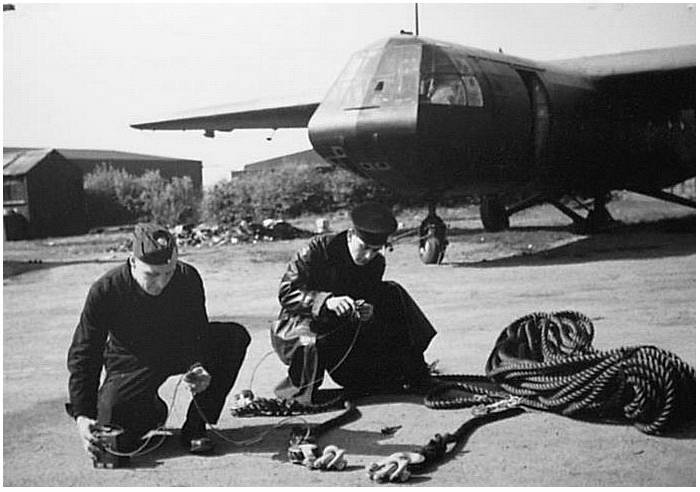
A Horsa glider is
prepared for the Channel crossing
The first group that lands in the night of 5 and 6 June are
Pathfinders 22nd Independent Parachute Company. There task is
to mark the DZ and LZ for the main force. The first British
allied liberator to land that night is Lieutenant de Latour.
On 20 June this officer, then Captain, is killed. His grave is
located at the CWGC (Commonwealth War Grave Cemetery) at
Ranville.
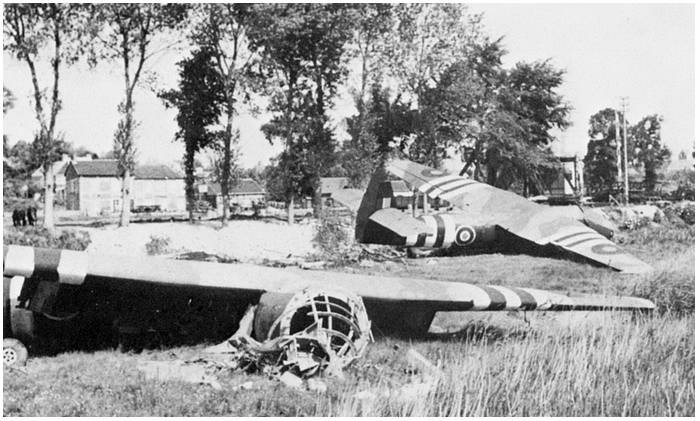
The Horsa gliders at
Pegasus brug
At the same time as the Pathfinders land, six Horsa gliders, from the Oxs and
Bucks, fly near their LZ, between the area of the river Orne
and the Caen canal. During the landing, Glider 3, flown by
Staff Sergeant Barkway, breaks and the first casualty of D-Day
is recorded when Lance-Corporal Fred Greenhalgh drowns in the
accident.
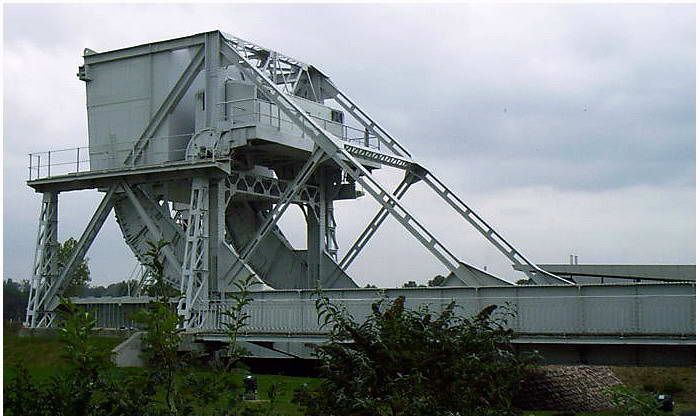
The Pegasus Bridge in
British hands, 6 June 1944
Pegasus
Within 10 minutes the most famous of all bridges during the
Normandy campaign is captured and in firm hands by the 6th
Airborne Division. After the insignia of the division, the
flying horse from the Greek mythology, the bridge adopts its
name, and is now known as 'Pegasus'. (Not exactly properly.
As codename, the bridge was to be called after the capture,
‘HAM and for the bridge over the river Orne ‘JAM’. The bridge
‘JAM’ lies a couple of hundred meters eastwards and is now
called ‘Horsa’.)
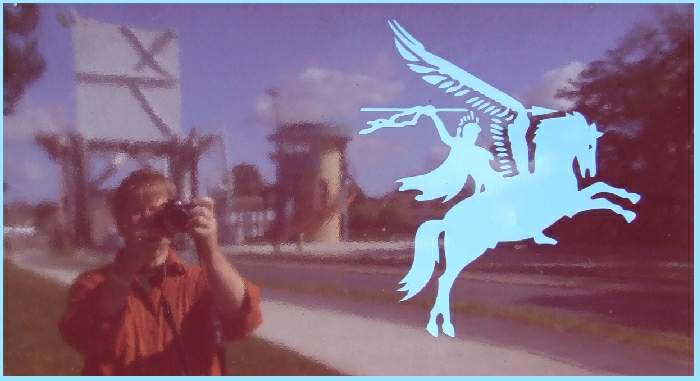
The six platoons in the first Horsa gliders that landed at
the Orne River and the Caen Canal, were crucial. If this
operation had failed, and the Germans had managed to destroy
the small group of para’s of D Company, then the whole drop of
the 6th Airborne Division would have been in jeopardy. This
could have turned into the same disaster as the 1st Airborne
Division would have three months later at Oosterbeek during
Operation Market-Garden. Just a small portion of this
division could escape before it was completely destroyed.
Battery of
Merville
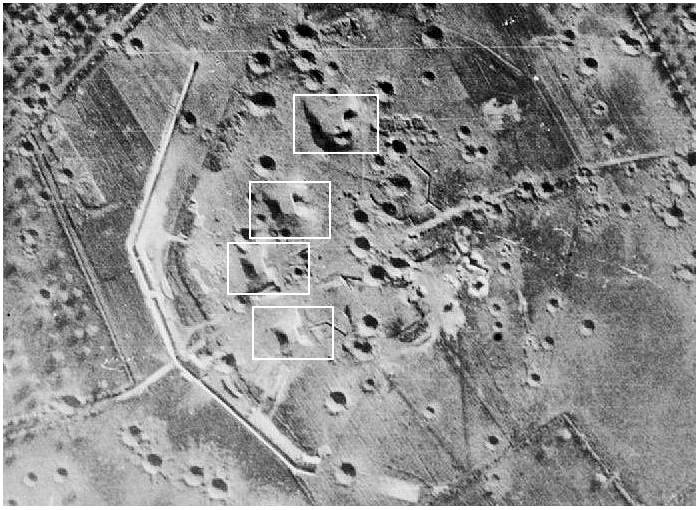
The Battery of
Merville, the casemates are in the squares
Not only at the bridges that cross the Orne
River and the Caen Canal, but also a commando operation by
para’s was at the Battery of Merville. Here was a task for 9th
Para Battalion do take this complex. Only, this was planned to
take place on a later timescale. Some 600 men were airborne to
take the battery at Merville. But during the jump, around
00.20 hoursm most men were scattered for miles.
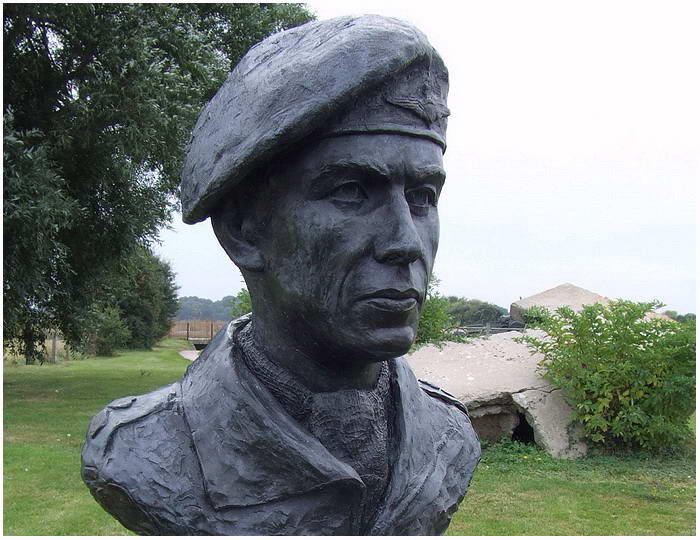
A very nice bust of
Major Otway stands on the grounds of Merville
With only 150 men, Lieutenant-Colonel Otway manages to
overrun the battery. Seventy officers and lower ranks got
killed or were wounded. They only took 22 Germans prison, the
other defenders were killed.
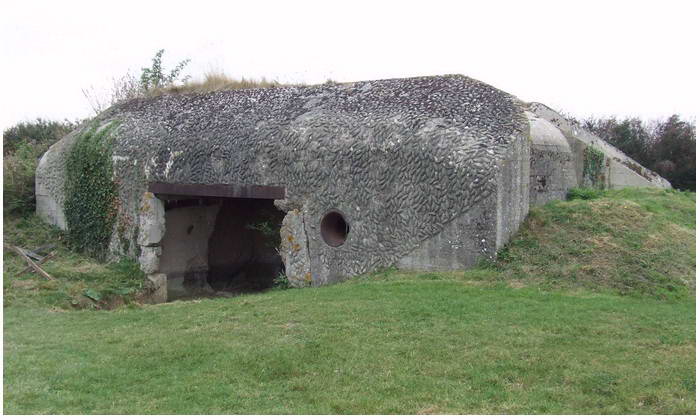
Battery of
Merville, today it's silent

Paratrooper Fred
Walker, one of the paratroopers
of3rd Commando, 2nd Troop
who fought
for the casemates of Merville
The Bridges
When the first gliders arrived with the main force, it
turned out that some beacons were wrongly placed. Gliders that
should have landed in DZ ‘K’, south of Escoville, landed in DZ
‘N’, north of Ranville. The 8th Parachute Battalion is divided
in two. Major J.C.A. Roseveare, Royal Egineers, commander of
the 3rd Para Sqn RE, on DZ ’N’ discovers the mistake and
collects about forty engineers and thirty paratroopers. With
six small lorries and a Jeep they head for the bridges of
Bures and Troarn. On the crossing D37 with the D37B they leave
the paratroopers behind to put up a defence. A couple of
engineers are sent to the bridges of Bures to destroy them
(both are blown at 09.00 hours in the morning of the 6th).
Major Rosevaere continues in the Jeep with another officer and
seven engineers the D37 to Troarn.
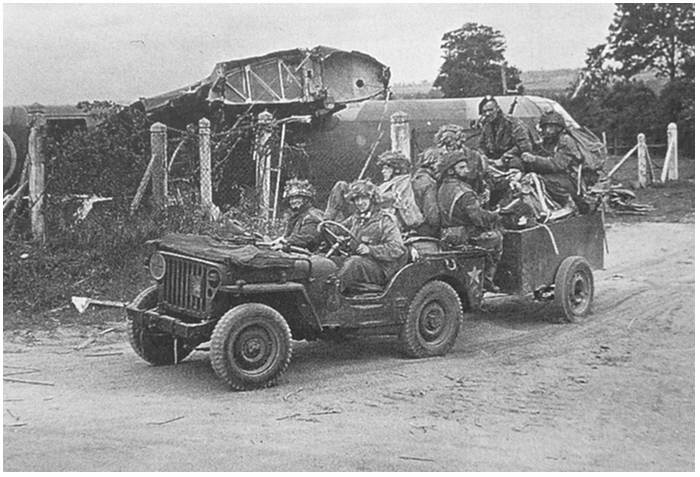
An example of a
6th Airborne Jeep with a trailer
(like Roseveare drove to
the bridge of Troarn)
Behind the Jeep hangs a little trailer filled with
explosives. At the (old) crossing with N875 the Jeep runs into
a roadblock and gets entangled n the barbed wire. A German
guard fires a shot but than makes a run for it. After 20
minutes the men manage to on untangle their Jeep from the
wire. On the N175 they shoot a German soldier from his bike.
When the small party drives into Troarn,…‘the fun started’
say’s Roseveare. They seem to be fired upon from every window
and door. The engineers fire in return, one man from the
trailer uses a Bren machinegun to hose the streets. On the
N175 to Samson they find the bridge across the river Dives.
They place the explosives and five minutes later the blast
creates a hole of 20 feet in the bridge, it is 05.00 hours.
The men ditch the Jeep and they head on foot for Mesnil. Here
they arrive at 13.00 hours.
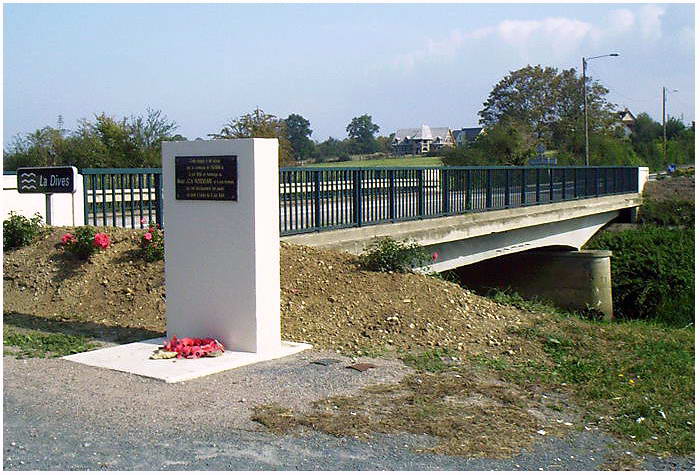
The bridge near
St-Samson present days
At the end of the 6th of June, 4.800 paratroopers are
brought in. Due to the wrongly placed beacons and the bad
weather only 3000 men reach their objectives. The losses run
high. From the 196 men of the Glider Pilot Regiment alone, 71
men perish that day. But the men retain their thin line of
defence.
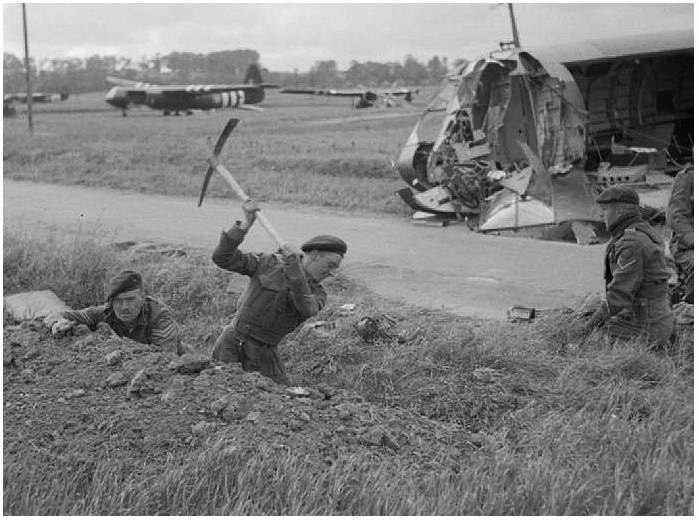
British para's dig
foxholes to prepare for a counterattack by Germans
When at last the breakthrough in August starts around Caen
and the Second Army into Normandy flows, the 6th Airborne
Division goes from the defensive in the offensive. Early
September 1944, the 6th Airborne is pulled back and brought
back to England. They lost 4457 men during the constant battle
since their landing in June.
'Battle of the
Bulge' & 'Operation Varsity'
When on 16 December 1944 the Germans start their offensive
against the American 12th Army Group it is decided to bring in
the 6th Airborne Division. Four days later the men arrive in
Belgium. The plan is to take position in the north of the
Ardennes. But when they reach their positions, on 26 December,
the attack from the Germans has stopped. They pursue the
fleeing Germans and this brings them into Germany and they
capture Bure. Early February 1945, the 6th is once again
pulled back via Holland and brought back to England. Here they
are brought back to strength and made ready for a airborne
operation
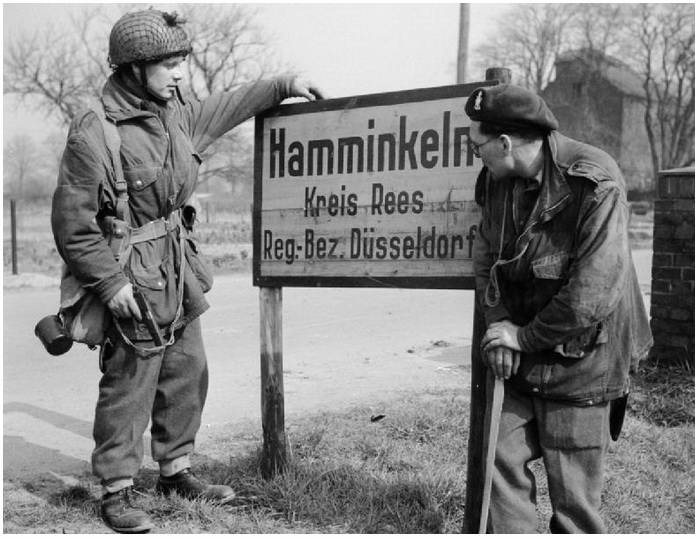
British para’s
of the 6th landed in Germany during ‘Operation Varsity’
During ‘Operation Varsity’, spring 1945, the 6th Airborne
Division jumps together with the American 17th Airborne
Division across the river Rhine to establish a bridgehead for
the attacking allied land-forces. The 3rd Parachute Brigade
fights on the left flank and secures the area against German
counter attacks.
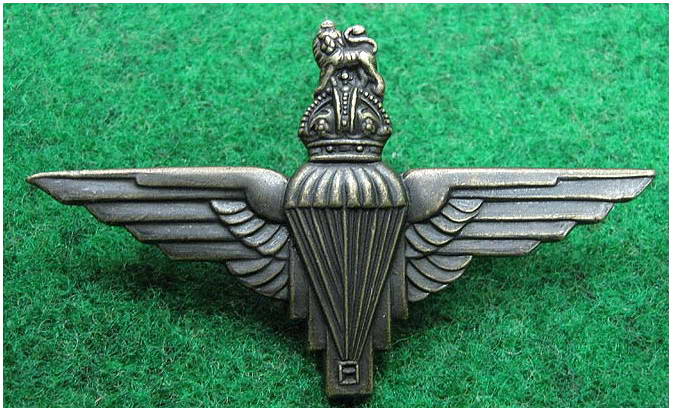
CLICK HERE
To go to the 82nd Airborne
Division.
RETURN